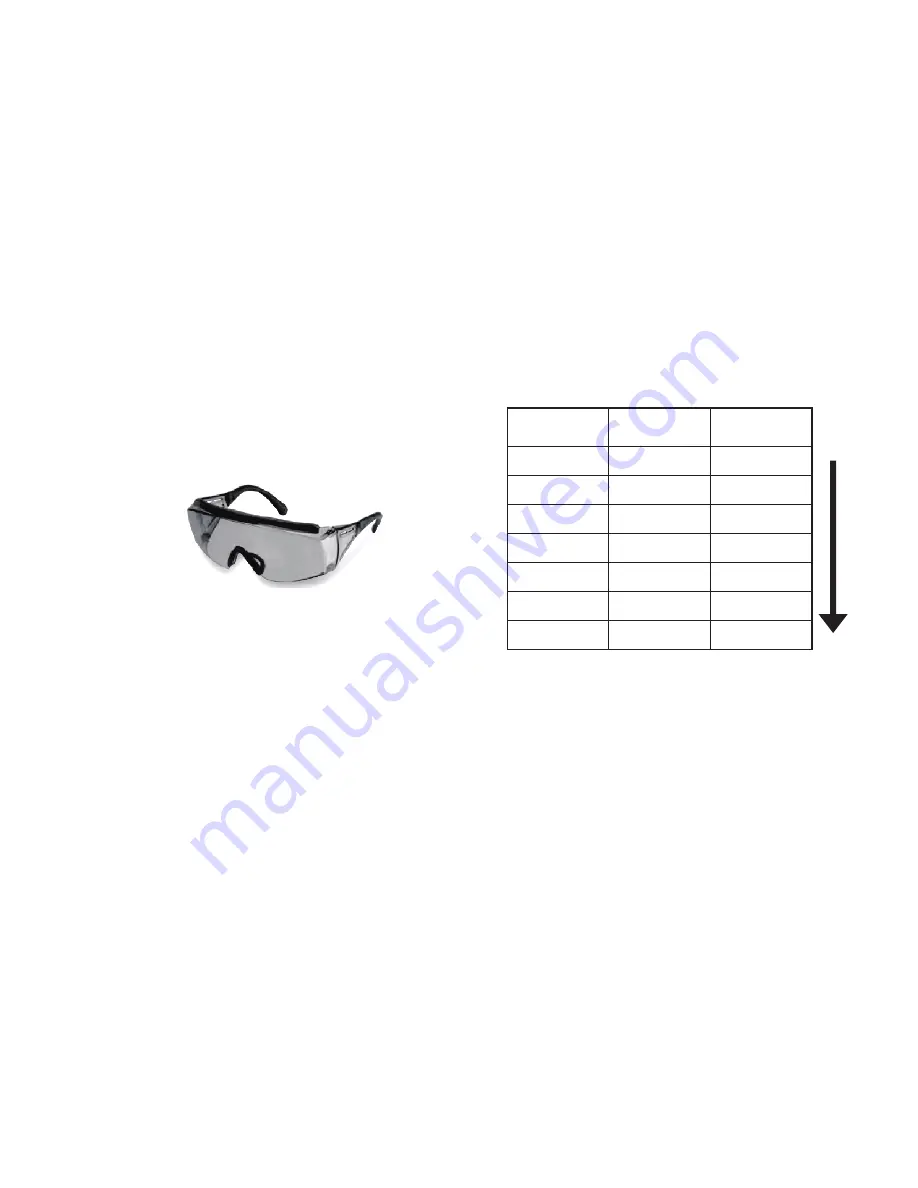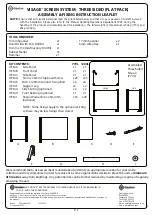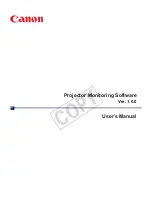
(No.PA056<Rev.002>) 9
2.3
NOTES ON REPAIRING LASER PRODUCTS
The light leakage of this product (when the shield cover is
assembled correctly) is Class 1 or below. The product is
designed with safety aspects taken into consideration.
However, as an extra precaution during repair, please take note
of the followings:
(1) Avoid lighting up this product unnecessarily while the cab-
inet is removed.
(2) Wear a pair of laser safety goggles to access the inside of
the shield cover. (Light leakage equivalent to Class 4 may
be emitted.)
Open the cover to the minimum required area. Be sure to
close the shield cover after completing the diagnosis and
repair.
(3) If the interlock is released for fault diagnosis and repair, be
sure to restore the interlock and confirm its operation after
completing the diagnosis and repair.
(4) Never remove the covers for the optical unit and the LD
block.
(5) Be sure to turn off the laser light, attach the shield cover
and unplug the power cord when you leave the service lo-
cation.
2.3.1 Laser Safety Goggles
• The laser safety goggles protect the eyes by absorbing the
scattered laser light.
Make sure to check the wavelength of the laser light for appro-
priate use.
• Be sure to use laser safety goggles with wavelength range of
448 to 462 and OD value 5 or above.
• Your eyes will not be protected if the wavelength range of the
goggles is not within the specified range.
• The higher the OD value, the greater the protection level the
laser safety goggles provide. The attenuation of incident light
increases thereby lowering the transmittance.
• Do not look into the light even when using the laser safety gog-
gles. (Light leakage equivalent to Class 4 may emit from the
projection lens and gap between the cover.)
• Do not expose the laser safety goggles to direct laser beam.
Otherwise, it may damage the goggles.
• Do not use laser other than the laser and wavelength specified.
(There may be lasers of the same name with different wave-
lengths)
• Do not remove the laser safety goggles during operations.
• Do not use the laser safety goggles as light shielding goggles
for welding.
• The complete absorption-type products are not protective
equipment that absorbs laser beam completely. (Check the
absorption characteristics of the safety goggles.)
• Do not use products with a standard visible light transmittance
of 20% or less in dark areas.
• Do not use the laser safety goggles once the goggles have
been exposed to high laser energy or if the goggles are dam-
aged.
• The laser safety goggles absorb a great amount of light of spe-
cific wavelengths. This affects the color balance of your eyes
temporarily after a long period of use.
• Usage environment, storage environment (direct sunlight, high
temperature, or high humidity), and scratches may change the
optical density of the goggles. Replace the goggles periodical-
ly.
2.3.2 What is the OD (Optical Density) value?
• The amount of transmitted light is expressed as transmittance %.
• The greater the absorption (transmittance % very close to ze-
ro) of specific wavelengths such as laser light, the safer it is for
your eyes.
• When the transmittance becomes lower, the number of zeros
increases in the decimal fraction making it complicated and
difficult to interpret the value.
• Optical Density (OD) value expresses transmittance in an easy
to understand manner.
• Optical Density is the logarithm of the degree of absorption.
The relationship with transmittance is shown in the following
table.
Model No. : YL 335-AR(45)/Opto Sigma Co.
Recommended laser safety goggles
Optical Density
(OD)
0
1
2
3
4
5
6
0
1/10
1/100
1/1000
1/10000
1/100000
1/1000000
100
10
1
0.1
0.01
0.001
0.0001
Attenuation
Transmittance
(%)
Highly safe










































